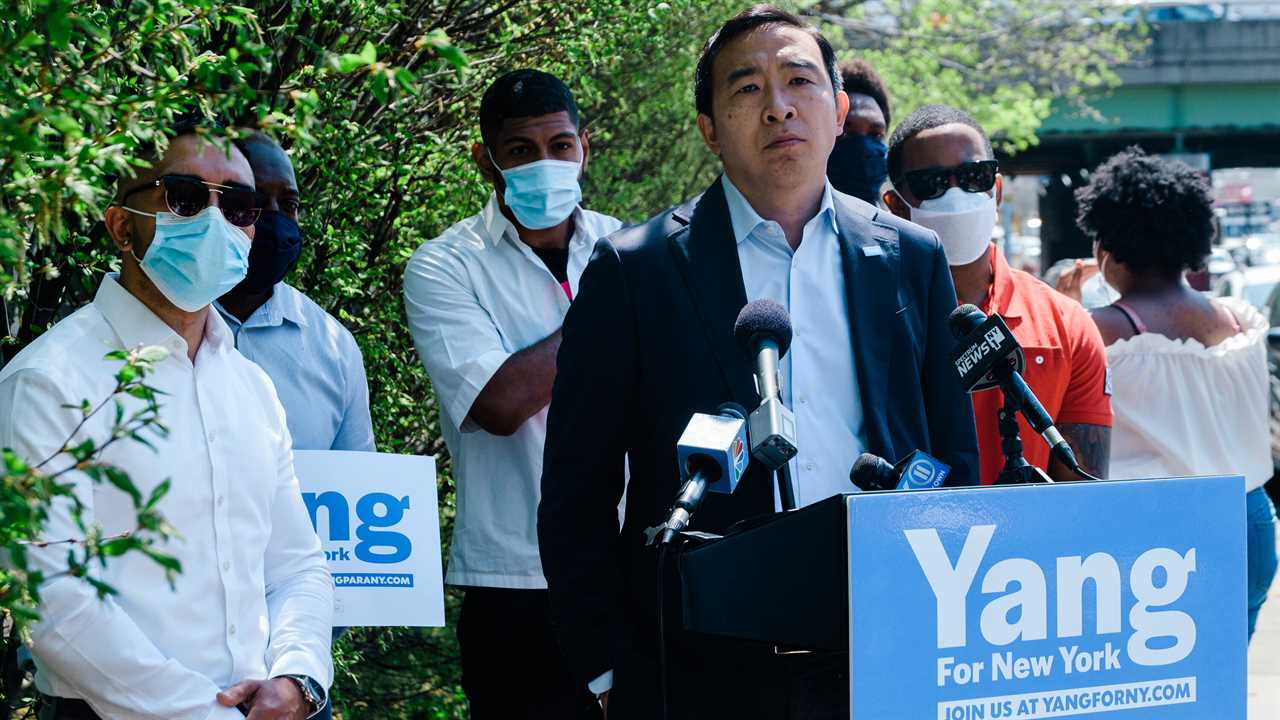
With less than two months to go until the all-important Democratic primary, the New York City mayor’s race is one of the costliest and most closely watched political campaigns in the country this year. It’s also one of the most uncertain.
The businessman Andrew Yang is widely seen as the front-runner, mostly thanks to the celebrity profile that he accrued on the presidential campaign trail last year, when he mounted a quixotic run.
But with a ranked-choice voting system in place for the first time, and most voters still relatively unengaged and unaware of the candidates involved, no one has emerged with a clear path to victory.
“Yang is the front-runner, but a vulnerable front-runner,” Doug Schoen, a political strategist and longtime adviser to former Mayor Michael Bloomberg, said in an interview. “It isn’t clear to me now who will be his rival — but a rival can and may well emerge.”
On Wednesday, a major wrench flew into the campaign when Scott Stringer, the city’s comptroller and the leading progressive in the race, was accused of sexual assault. Jean Kim, now a political lobbyist, said that when she was an intern for his campaign for public advocate in 2001, he kissed and groped her and pressured her to have sex with him. (Mr. Stringer denied the allegations, saying that he and Ms. Kim had had a brief, consensual relationship.)
The blowback has been immediate and severe. The three female Democratic mayoral candidates — including Mr. Stringer’s top progressive rival, Maya Wiley, a former aide to Mayor Bill de Blasio — called on Mr. Stringer to exit the race. He canceled a birthday fund-raiser that had been planned for yesterday.
Recent surveys have found that Mr. Stringer, Mr. Yang and Eric Adams, the relatively moderate Brooklyn borough president, are the only three candidates with name recognition from a majority of likely voters. But those polls also found that half of voters hadn’t yet picked a candidate, reflecting how wide open the race remains.
Under the ranked-choice system, voters will select up to five candidates in order of preference. This could elevate a candidate who isn’t everyone’s first choice — but it could also hurt a candidate who is plenty of people’s first choice, but not as many people’s second or third choice.
“It adds chaos,” Ken Sherrill, a political scientist and chair of the Higher Education PAC, said of the new system.
“If we don’t watch out, we’re going to get a mayor almost chosen by random chance,” he continued, adding the caveat that over the next two months, awareness of the race may increase significantly.
“The information flow about the campaign has been a trickle, because other issues have crowded things out,” he said. “As information flow increases, interest will go up and information will go up.”
Ms. Wiley, who arguably stands to benefit the most from Mr. Stringer’s embattlement, faces an uphill climb. Just 36 percent of likely voters said they were familiar with who she was, according to a Spectrum News NY1/Ipsos NYC poll conducted this month.
For Dianne Morales, an anti-poverty organizer and nonprofit executive who is also angling for the left lane in the primary, the barriers to name recognition are even higher: She was known by only 25 percent of likely voters, according to the NY1 poll.
Asked in that poll what their major political concerns were for the next mayor to address, voters were most likely to say stopping the spread of Covid-19, reopening businesses and confronting crime. Upward of one in three likely voters named each of those. Addressing affordable housing, racial injustice and homelessness were cited less often.






